#provincial cotton
Explore tagged Tumblr posts
Text

#gadwal cotton saree#dhakai jamdani saree#designer cotton saree#handloom cotton#tant saree#linen cotton saree#soft cotton saree#provincial cotton
0 notes
Text

“The sun sets over the badlands of Dinosaur Provincial Park, Alberta, a UNESCO World Heritage Site known for its iconic hoodoos and abundance of dinosaur fossils.”
Photo by Murray Cotton.
Canadian Photos of the Year
#murray cotton#photographer#canadian photos of the year#badlands#landscape#dinosaur provincial park#alberta#canada#unesco world heritage site#dinosaur fossils#nature
13 notes
·
View notes
Text

In the dining room the wall fabric, a French printed cotton in an Indian tree-of-life pattern, is the backdrop for a large French Provincial table and painted Portuguese chairs. The combination gives the room an islandy feel.
Private Palm Beach - Tropical Style, 1992
#vintage#interior design#home#vintage interior#architecture#home decor#style#1990s#90s#dining room#wall fabric#tree of life#French#provincial#table#antique#table setting#dinner party#Palm Beach
161 notes
·
View notes
Text

Robe à la Polonaise
1780s
The Metropolitan Museum of Art
"The element of eighteenth-century fashion that we think of first is probably the court style. This linen dress of great beauty, and also of simplicity, provincialism, and even a degree of vulgarity compared to court dress, is most instructive. The bodice and skirt sewn together constitute a robe; a matching petticoat is worn underneath. Heavy linen, almost of a diaper weight and of great tactility, will always feel luxurious, but it also bears a common touch. Likewise, the floral appliqué is clumsy and garish, rather oversized for the dress, especially when compared with such refined examples as the embroidered cottons of the 1780s and 1790s of court style. But this country cousin possesses her own charm, and the dressmaking is sure. If a few roses loom too large and the reinforcement with metal sequins strikes one as grossly vernacular, one must remember that even high style in the emerging age of fashion plates and periodicals is not uniform and does not always conform to our ideal of good taste."
138 notes
·
View notes
Text


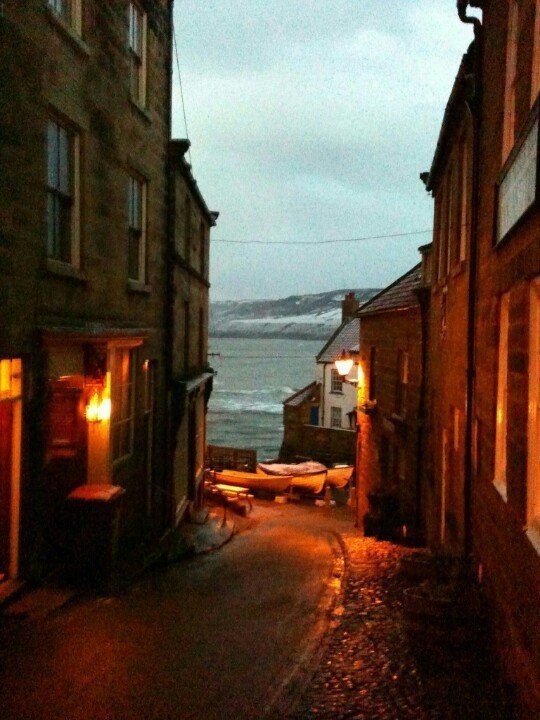
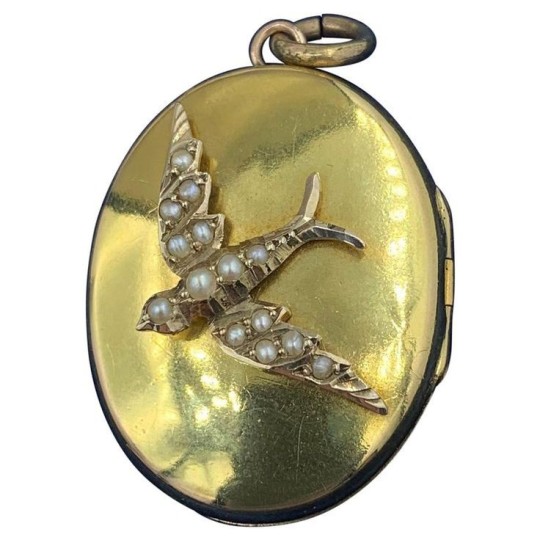

Seafoam on the shore
Pairing: Pirate! Hobie Brown x fem! Reader
Word count: 2.8k
Tags: Use of Y/N, no specific physical description of the reader (except for her clothing), CW drinking, CW food mentions, TW injury.
Between the Devil and the Sea Masterlist
Navigation
CHAPTER 1 >>> CHAPTER 2

You run as fast as you can, your feet flying off the muddy uneven streets. Huffing while a local copper yells at you to stop, his yells get more exhausted every second he chases after you. So far he isn't even near you, one of the few benefits of staying at a provincial fishing town is that the police are either too out of shape to catch you, their bellies round, definitely full of ale. Or they simply don't give a damn about a pickpocket, muttering to themselves how they're not paid enough to do a city cop's job.
Losing your balance, you silently curse at your worn down work boots. Sliding off the ground, skidding off down the streets, disturbing the hustle and bustle of the market. You hit a vegetable cart along the way, wood splintering, scratching your arms. Cabbages and carrots fly off, there's yelling and screaming around you and your legs are aching from the impact.
“Sorry!” You yell back to a disgruntled vendor.
He curses at you and your entire family for ruining his sale. You take a mental note to pay him back somehow when you're not currently occupied.
Digging your heels in, you come to a halt, you're lucky enough to get a hold on a lamp post. Glancing behind, you don't see the cop running after you but you're not taking any chances so you enter a tight alleyway. You know this village like the back of your hand, you have to or else seeing the inside of the jail would be waiting for you in the future.
Knowing there’s a pipe somewhere along the walls, you run your muddy hands along the bricks, the cramp walls touching your back and chest, you stop when your nail hits something metallic.
Your ears perk up at someone snitching, “fuck” without hesitation, you climb up the rusty pipe.
Hands digging into the metal. It creaks and groans, but it seems like lady luck is on your side when you reach the top with no problems.
Hearing hurried footsteps down below, you immediately lie low on the roof. Hiding yourself from his gaze. The cop glances around the alley, scratching his head, confused as to how you escaped without a trace.
“Damn” he mutters, completely winded.
You smile to yourself as he leaves. The sun bares at your back, cotton blouse sticking to your skin. Needing a bath is an understatement.
Standing up, you carefully tread the roof, avoiding floors that look damaged. You definitely don't want a repeat incident of what happened six villages ago. You can never get used to the view from up high, the sea blends in with the orange sky, melting together, blues, greens and reds mingle in harmony. The setting sun paints a picturesque scenery, draping everything it touches in its heavenly light.
Ships and fishing boats float above the waves as if they're dancing to the sound of the water splashing on its wooden sides.
Your hands instinctively reach for the necklace hidden under your blouse. Fingers tracing the etching of a flying bird that you know like the back of your hand.
Despite the open sea, you can't help but feel trapped. The docks beckon you over to somewhere you can't remember, somewhere where you can rest in peace, somewhere across the deep dark treacherous sea are people you can call your home. People who may have been looking for you all this time. Their faces are but a blur in your mind, voices a mere echo lingering in your heart. The pendant leaves a circular indent on your palms as you grip it tight.
Is it possible to miss someone you don't even remember?
Your train of thought gets interrupted by movement from a ship floating along the dock, a large sailboat whose wood differs from each one of its structures. You can tell from how some of it is painted gold and silver like the ones on royal ships, it looks like it was hastily hammered into regular oak with intricate carvings. Some wood blends better together, dark timber melding with ashen wood. Three cannons are lined on the sides, its metal having seen better days, no longer glimmering in the sunlight.
From where you're standing, the figurehead on the bow looks peculiar, like nothing you've ever seen traveling along coastal towns. A fierce creature with sharp teeth opening its jaws, eyes wide and alert. Its red scaly skin adds to its terrifying image. What's more peculiar is the lack of flag flying on its mast. An unknown ship from an unknown place tickles your curiosity.
You slink back down on the roof when a woman emerges from below deck, her blond hair shining under the sun. Another much taller one follows behind her. Raven colored hair flowing in the soft wind. They seem to be arguing, but you're completely bewildered as to how they're allowed to sail. All this time, you can't believe that you can actually step foot inside a boat, moreso sail on it.
This changes everything, you suppose.
You leave the roof, letting the women argue amongst themselves. Expertly hopping from awning to canopy, you land at your final destination, the White Salmon pub.
Jumping down, you land on a cart full of broken fishing nets, it's a miracle that you weren't tangled under all the mess.
Entering the rowdy pub, the smell of ale and pickled fish enters your nostrils. A bunch of sailors sing off key in the middle, too drunk to care about the ruckus they're making. You try to blend in with the drunk crowd, hiding behind people, weaving around them to sneak past the bar and upto the stairs leading up to your room.
“Oi! did ya think I wouldn't notice ya?”
You stop just about the foot of the stairs. Groaning in exasperation, quickly taking off the bandana tied around your face to conceal half of your face. You try your best to put your best smile, turning your charm up to a hundred.
“Hi, aunty Janet” you walk towards her like a child caught with their hands inside the cookie jar. “I got the butter you asked”
Janet huffs, eyes narrowed, her brows furrowed. You place the stick of butter in front of her like an offering to appease an angry God.
“Please don't tell me the coppers will be knocking on my doors again”
“That was one time! Besides I actually paid for this one” you push the butter towards her with your finger. She stares at it like you're giving her contraband.
You give her one charming smile, she sighs, taking the butter from the counter. “You're on thin ice, Y/N. Don't make me regret taking you in.”
“That was a year ago and look, I'm still here!”
“A year and a half, I counted because with every shit ya manage to pull, a strand of my hair turns white.” she points at her hair that's almost completely white. “This used to be black”
“I know, I'm sorry. I just need to–”
“To what? It always seems like you're hiding shit from me and Thena” She tries to hold your hand on the counter but you flinch away.
“Won't happen again, I promise.” A clear lie on your part, you'll just have to be better at sneaking. You vault over the counter to roll up your sleeves, clean yourself up and put on your apron.
“When will you learn, girl?”
“When the king sentences me to death himself!” grabbing an empty tray, you start clearing a nearby table. Janet pinches the bridge of her nose.
After dodging rowdy customers and a flying pint, Thena takes a break with you in the tiny corner of the tavern. She unabashedly sighs loudly, smelling of ale and lavender she hastily rubbed on to mask the scent of alcohol.
You side eye her with a tired smile, Thena sighs again, louder this time, a few patrons gaze your way.
“Alright, what's wrong?”
“Oh nothin' it's just Arthur's back again and he hasn't even glanced my way”
You flick your eyes towards the blonde patron nursing a pint, his green eyes meet yours, he smiles with his yellow teeth and you look away immediately, not from embarrassment, no, but from how you don't want his eyes on you.
Why in the world is Thena so smitten by someone like Arthur who comes and goes into the pub more than he goes inside a bathroom?
“You could do better, Thena. One that actually brings in coins instead of using them all in the pub or a brothel.”
“I know,” she sighs once again. Leaning closer to your side so you slide further away. “But he's the fittest bloke here though” whining, she puffs out her cheeks.
As if some divine comedy, Arthur beckons you over with a twist of his hand. You internally cringe.
Thena gasps, “I think he's finally taking notice of me!” She stands up, sauntering over to his table with the confidence of a newborn deer.
Before you could rescue her though, Janet yells at you from the other side of the room. “Get back to work, Y/N!” She signals with head, pointing towards a table by the corner.
You groan, lumbering your way towards the customers. His large back is turned away from you, brown hair neatly slicked back, clothes looking too neat and expensive for a dingy pub like the white salmon. His companion thumps her head on the wall lightly like she's trying to get water out of her ears. Her hair is cut short, glasses over her almond shaped eyes, clothes equally looking expensive but less neat than her large companion.
Her lips turn upwards once she sees you. “Finally some service” she stretches her legs out, noting how she's wearing trousers instead of the usual frilly skirts rich women wear.
“Sorry, what can I do for you?” You put on your customer service voice that's laced with mild annoyance. The man sits still like a rock, his back still turned away from you.
“Fish and chips, some pickled eggs and a pint.” She glances at her friend before groaning with a sly smirk. “And he'll have plain porridge, no seasoning, just porridge. It's better if it's days old. Right, Miguel?”
The man huffs, craning his neck to look over his shoulder. The single candle light on the table illuminates his chiseled face, turning his eyes crimson.
“A pint will do” his voice is gruff yet calm.
There's alarm bells ringing in your head, the tray falls from your shaking hands. Your heart thumps louder than the clanking metal.
“Careful there, it's bad to drink on the job” His friend’s comment falls on deaf ears as you stare at the man before you. His expression doesn't change except for how his eyebrows lift slightly.
It's been years, surely he doesn't recognize me as an adult, right?
You clear your throat, mustering the best smile you can do. “Sorry about that, I'll get your orders right away” leaning down to take the tray from the sticky floors, your necklace slips out of your blouse, the gold shimmering in the candle light.
He could burn you with just his stare.
Walking briskly, clutching the tray, its metal is uncomfortably cold on your skin. The pub seems to get louder and louder with every footstep, the laughter and rowdy singing makes you dizzy. Janet calls after you as you run up the stairs to your room.
Thinking fast, you lock the door, pushing your dresser to further lock it. Your mind races to the floorboards beneath your threadbare bed. With your bare hands you hastily take the wood out revealing a hollow hole containing your possessions.
There's loud booming footsteps climbing up the stairs. Followed by his voice calling your name.
“Fuck” without thinking, you take the bag from its hiding place, slinging it over your shoulder before you cross the small space to the window.
“Y/N, Please!” He keeps calling after you. “Let me just,” thump, “fuck!”
That's your signal to jump down.
Landing on your heels, you feel your knees aching from the fall. You hear your bedroom door slam open with a force that surely broke its hinges.
You run like you've ran from him like last time.
Suddenly, you're thirteen years old, weaving through the forest, vines prickling your legs as you wade through the thicket. White lilies are but a blur as tears flow freely from your eyes as you keep running without a destination.
Why? Aren't you enough? Did she not love you like you thought she did? What did you do to deserve being abandoned twice?
You're back to the present when he yells your name again. Your heart pounds loudly on your ribcage, lungs burning, you feel like you're about to collapse.
His companion also runs after you, screaming your name desperately.
But you have the upperhand. Using the moon as your guide, you climb up a house, its bricks protruding out of the walls, the place you used to climb to practice, but now you climb it to save your own skin.
Running from roof to roof, you feel a presence behind you. His thunderous footsteps echo into the cold night. You don't dare look behind.
The woman follows you from the ground, her heels clicking on the uneven sidewalk. “Y/N! Wait up–shit!” Without looking down, you hear her fall.
He screams your name again, the same one she called you back then.
You run furiously, jumping off the side only to keep running towards the docks. Panicking, you see a ship leaving the docks, its fishing net left hanging on the side. Without thinking, you make a break for it.
Sprinting on the old docks, you leap the huge gap. Miraculously, you take hold of the net, clinging to it with all your might. Entering the net, you ignore the smell of fish, watching as the place you once called home gets smaller and smaller.
You say goodbye to Janet, who kindly took you in without asking for anything in return. Who gave you a job and a room so you don't freeze and starve outside. Who took care of you when you fell ill to the cold.
You say goodbye to Thena, the only friend you've ever had, the longest friend you've ever had. The same Thena who taught you how to sew and mend your own clothes. Thena who taught you how to throw a punch when a handsy sailor tries to touch you.
Thena whom you've grown accustomed to calling you her sister.
You say goodbye to the fishing town you've only recently called your home.
You say goodbye to the man at the docks who's staring at your fleeing form, whose eyes are narrowed, almost pleading for you to come back.

A/N: There's no Hobie appearance in this chapter yet :( (next chapter though 👀)
Hope you like it, thank you for reading!
#between the devil and the sea#between the devil and the sea chap 1#BDAS#Between the devil and the sea series#hobie brown x reader#spider punk x reader#the kr8tor's creations#hobie brown#spider punk#x reader#atsv fanfiction#atsv fanfic#atsv x reader#hobie brown x fem!reader#hobie brown x you#pirate! hobie brown#spider punk x fem!reader#cw food mention#cw drinking#tw injury#fanfic
300 notes
·
View notes
Photo
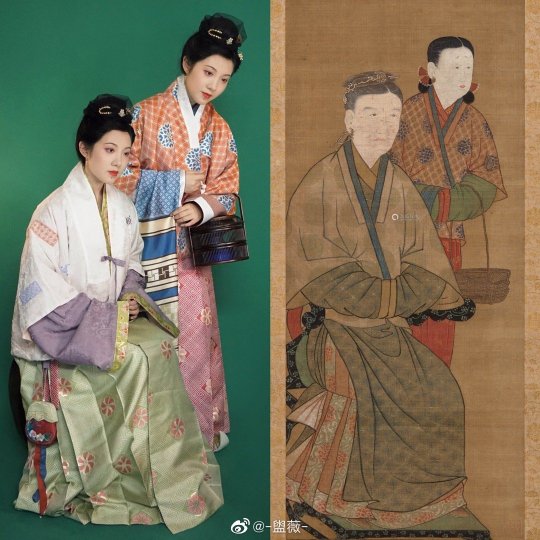

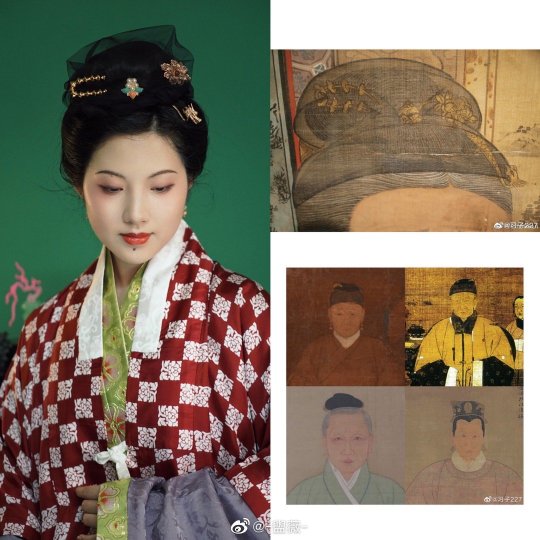
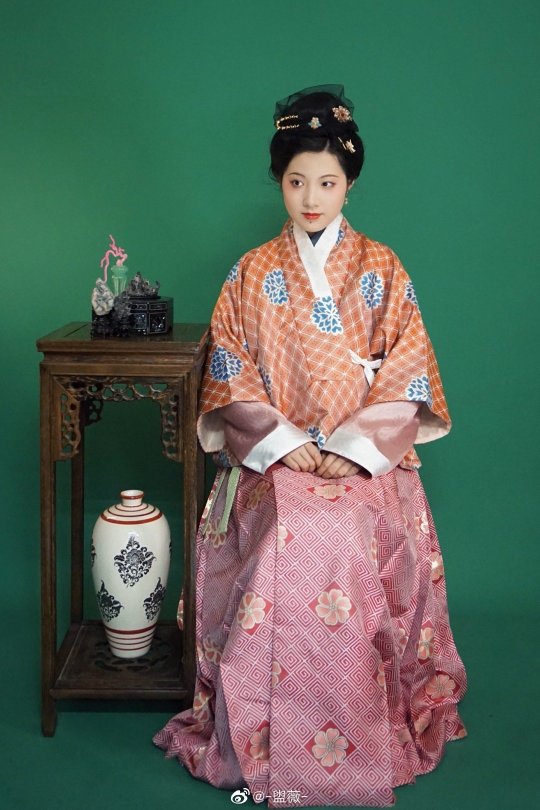
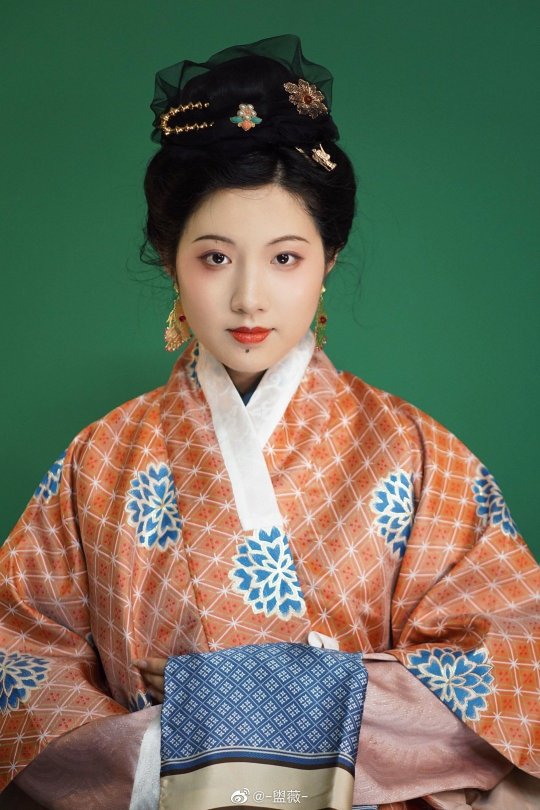
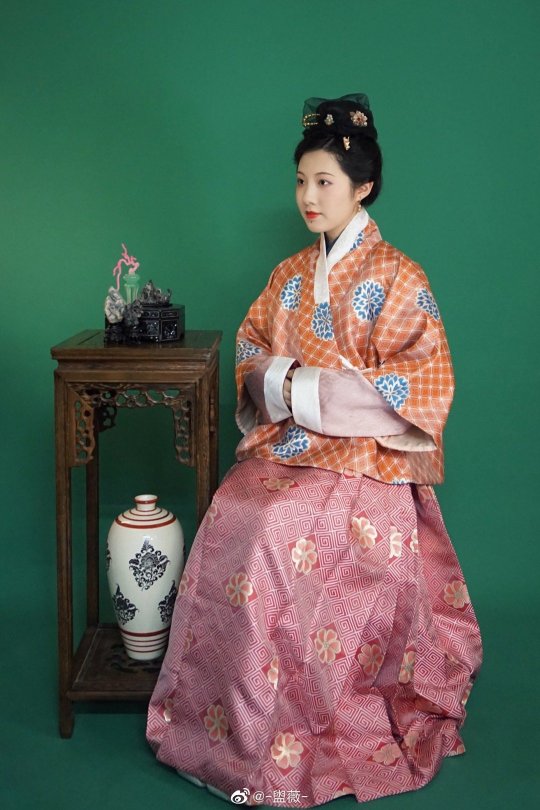
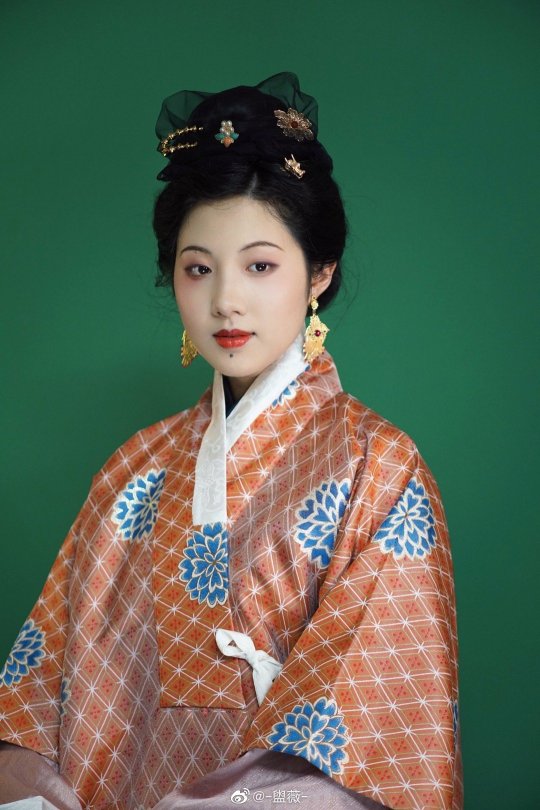
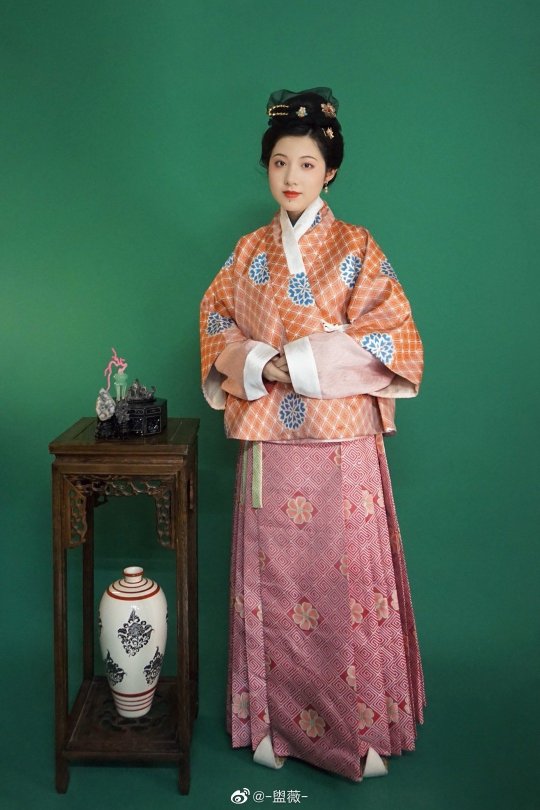
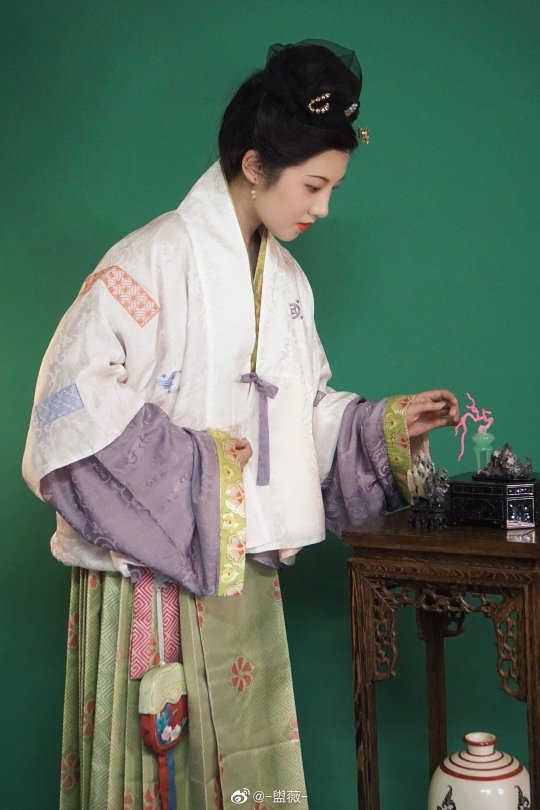
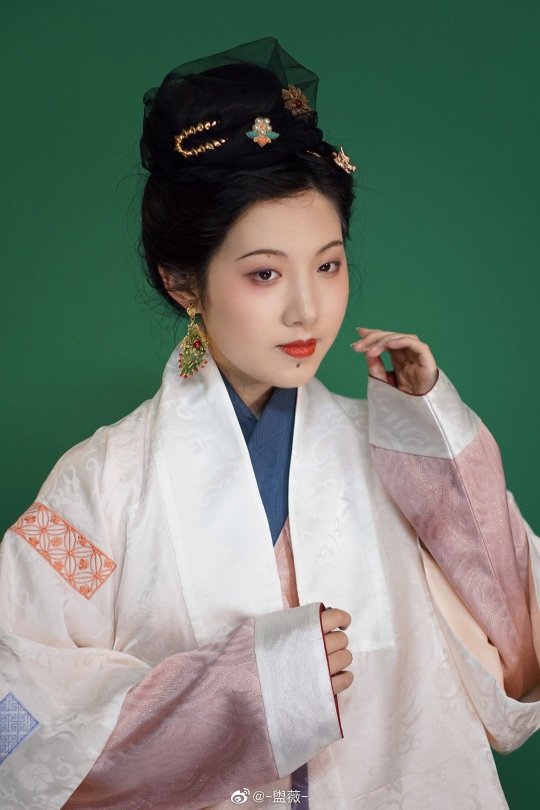

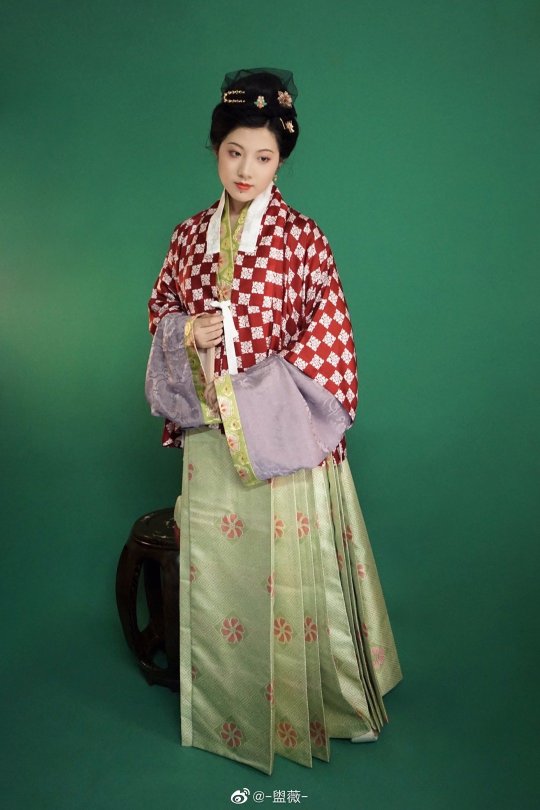
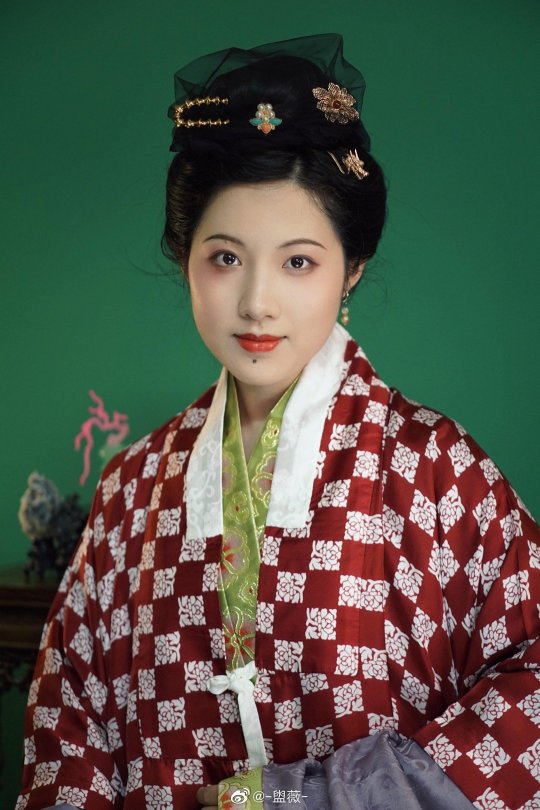
【Historical Reference Artifacts】:
Portraits and Mural of Women in the Late Yuan-Early Ming Dynasties

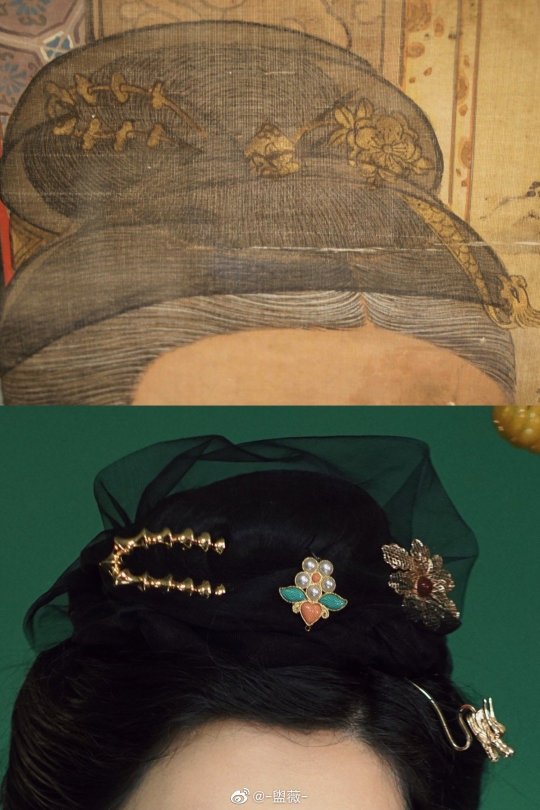
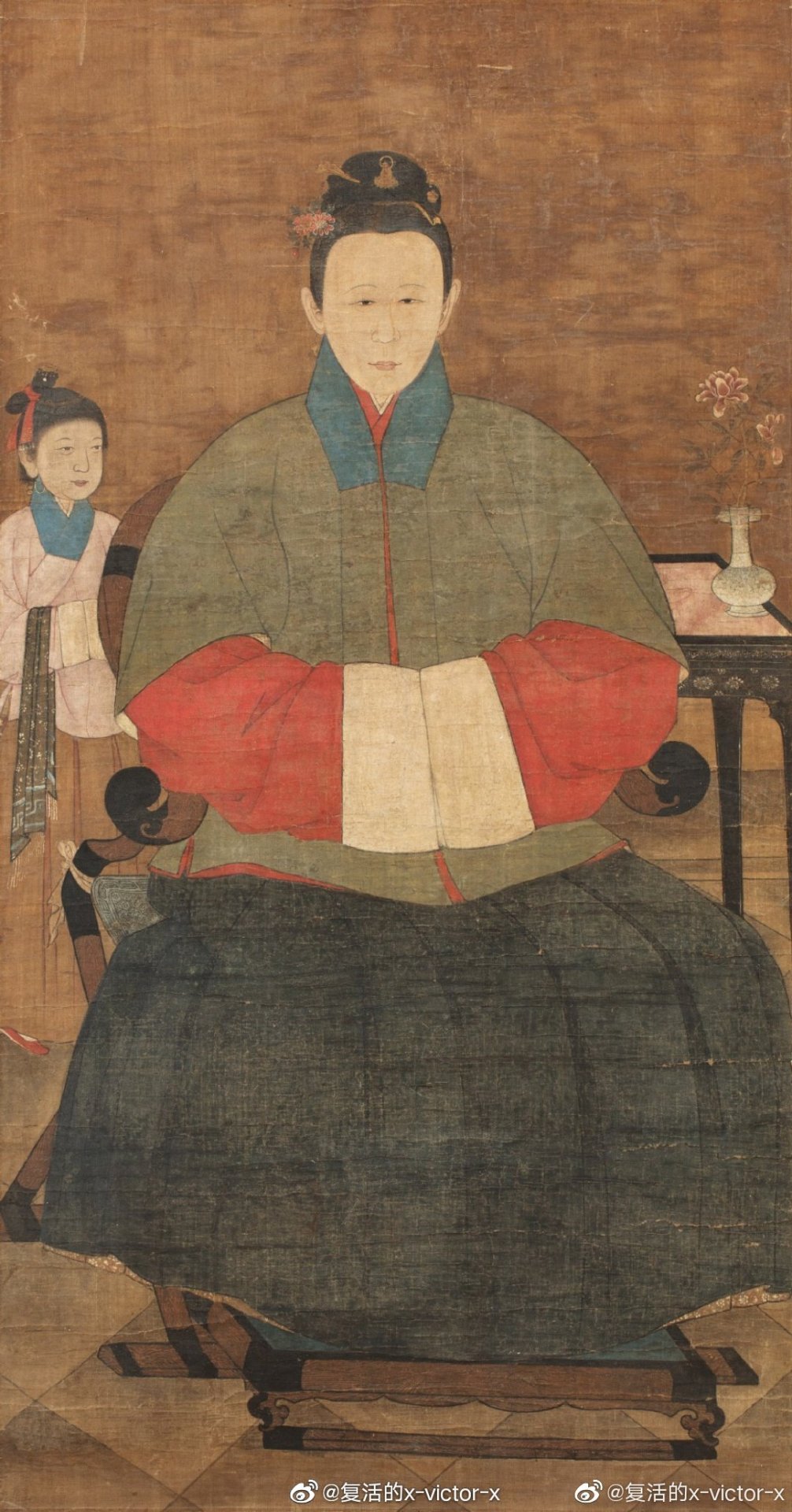
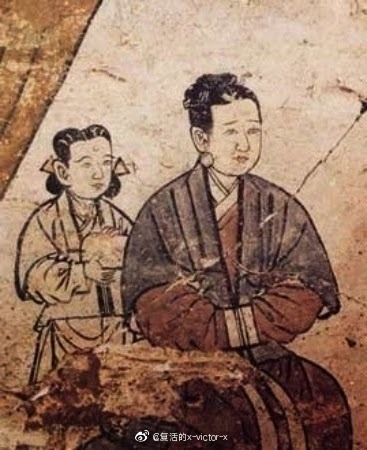
Chinese Ming Dynasty Yongle period(1360–1424) Hanfu Relic: 长袖夹衣&素纱单裙
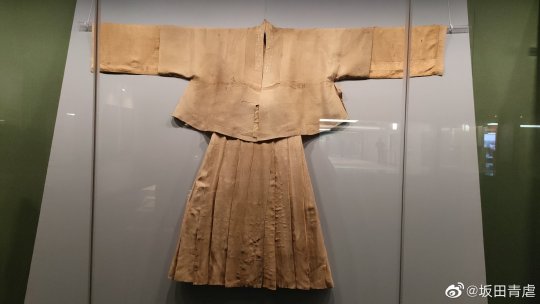
Yuan Dynasty Clothing Relics: 妆花凤戏牡丹纹绫夹衫,Unearthed from the tomb of Wang Shixian(汪世显)'s family in Zhang County,Gansu Provincial Museum Collection
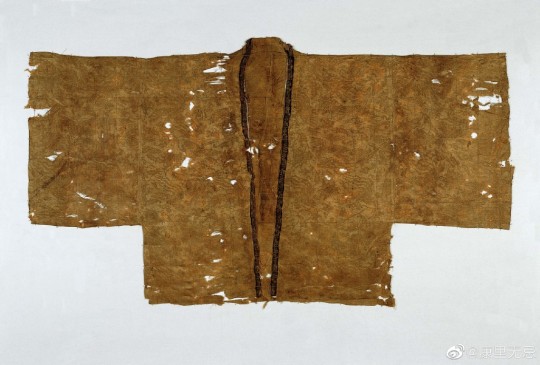
Yuan Dynasty Clothing Relics: 印金团花图案夹衫
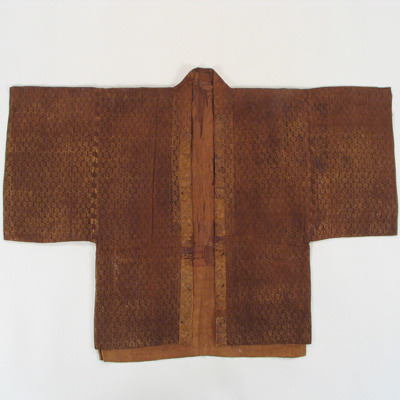
[Hanfu · 漢服]China Late Yuan to Early Ming Dynasties Traditional Clothing Hanfu Refer to Portraits and Mural of Women in the Late Yuan-Early Ming Dynasties
Typical styles of Han ethnic Women in the Late Yuan and Early Ming Dynasties
And it seen that the jacket has a certain connection with the jacket of the Southern Song Dynasty to some extent as blow:
Cotton jacket unearthed from the tomb of Huang Sheng(黄昇) in the Southern Song Dynasty in Fuzhou
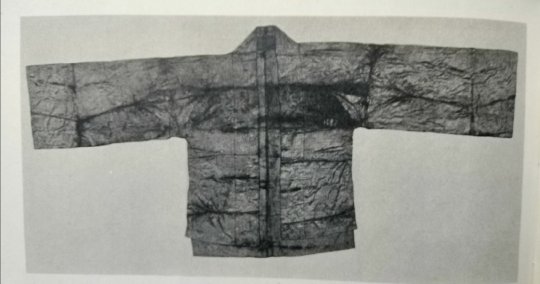
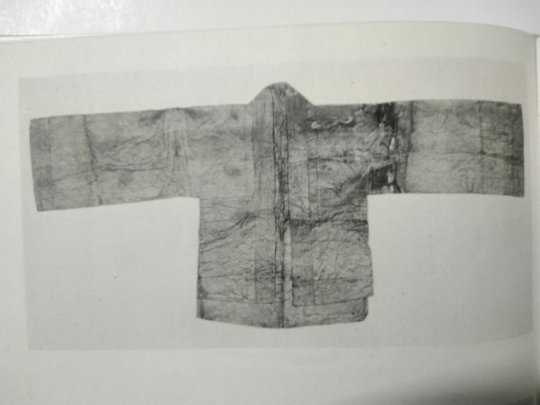
Chinese Southern Song Dynasty Painting<仙馆秾花图>,Collection of National Palace Museum, Taipei
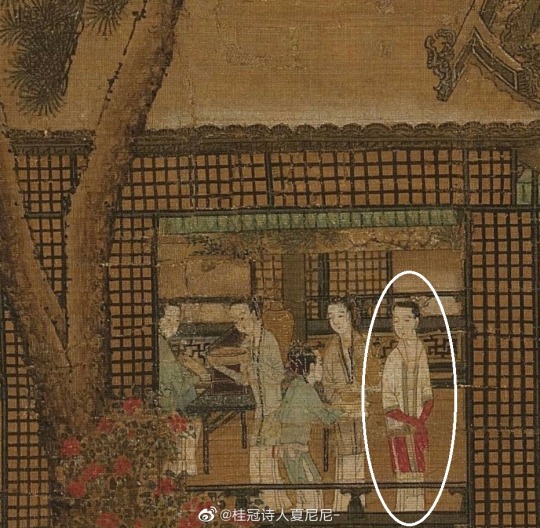
_______
📸Recreation Work: @-盥薇-
👗Hanfu: @YUNJIN云今
💎Earring:@江琛复古生活馆
🔗Weibo:https://weibo.com/3942003133/N6t86nHOM
_______
#chinese hanfu#Late Yuan and early Ming Dynasty#southern song dynasty#Yuan Dynasty#hanfu#chinese fashion#China History#historical fashion#historical hairstyles#hanfu accessories#-盥薇-#YUNJIN云今#@江琛复古生活馆#china
217 notes
·
View notes
Text
Partial list of the books that Helene Hanff ordered from Marks & Co. and mentioned in 84, Charing Cross Road (alphabetical order):
Austen, Jane. Pride and Prejudice, (1813)
Arkwright, Francis trans. Memoirs of the Duc de Saint-Simon
Belloc, Hillaire. Essays.
Catullus – Loeb Classics
Chaucer, Geoffrey The Canterbury Tales translated by Hill, published by Longmans 1934)
Delafield, E. M., Diary of a Provincial Lady
Dobson, Austen ed. The Sir Roger De Coverley Papers
Donne, John Sermons
Elizabethan Poetry
Grahame, Kenneth, The Wind in the Willows
Greek New Testament
Grolier Bible
Hazlitt, William. Selected Essays Of William Hazlitt 1778 To 1830, Nonesuch Press edition.
Horace – Loeb Classics
Hunt, Leigh. Essays.
Johnson, Samuel, On Shakespeare, 1908, Intro by Walter Raleigh
Jonson, Ben. Timber
Lamb, Charles. Essays of Elia, (1823).
Landor, Walter Savage. Vol II of The Works and Life of Walter Savage Landor (1876) – Imaginary Conversations
Latin Anglican New Testament
Latin Vulgate Bible / Latin Vulgate New Testament
Latin Vulgate Dictionary
Leonard, R. M. ed. The Book-Lover's Anthology, (1911)
Newman, John Henry. Discourses on the Scope and Nature of University Education. Addressed to the Catholics of Dublin – "The Idea of a University" (1852 and 1858)
Pepys, Samuel. Pepys Diary – 4 Volume Braybrook ed. (1926, revised ed.)
Plato's Four Socratic Dialogues, 1903
Quiller-Couch, Arthur, The Oxford Book Of English Verse
Quiller-Couch, Arthur, The Pilgrim's Way
Quiller-Couch, Arthur, Oxford Book of English Prose
Sappho – Loeb Classics
St. John, Christopher Ed. Ellen Terry and Bernard Shaw : A Correspondence / The Shaw – Terry Letters : A Romantic Correspondence
Sterne, Laurence, The Life and Opinions of Tristram Shandy, Gentleman, (1759)
Stevenson, Robert Louis. Virginibus Puerisque
de Tocqueville, Alexis Journey to America (1831–1832)
Wyatt, Thomas. Poems of Thomas Wyatt
Walton, Izaak and Charles Cotton. The Compleat Angler. (John Major's 2nd ed., 1824)
Walton, Izaak. The Lives of – John Donne – Sir Henry Wotton – Richard Hooker – George Herbert & Robert Sanderson
Woolf, Virginia, The Common Reader, 1932.
13 notes
·
View notes
Text
The Timeless Charm of Brocante: Why We Love This Vintage-Inspired Style

When it comes to interior design, few styles capture the romance and nostalgia of the past quite like Brocante. Rooted in French culture, the term “brocante” refers to flea markets or second-hand goods, yet its essence transcends simple thrift shopping. Brocante is an artful mix of vintage elegance, rustic charm, and a touch of whimsy that creates a warm, lived-in atmosphere. But why does this style resonate so deeply with design enthusiasts? Let’s dive into the world of Brocante and uncover its enduring appeal.
What Defines Brocante Style?
At its core, Brocante style is about breathing new life into old treasures. It thrives on the beauty of imperfection, celebrating items that show the passage of time. Think antique furniture with distressed finishes, mismatched dinnerware with delicate patterns, weathered textiles, and handmade details.
Brocante isn’t about creating a flawless, museum-like environment. Instead, it embraces a curated, eclectic look where each piece has a story to tell. Key elements of Brocante interiors include:
Vintage Furniture: French armoires, wooden dining tables with chipped paint, or upholstered chairs with faded fabrics.
Soft Color Palettes: Muted tones like white, beige, pastels, and soft greys dominate the color scheme, creating a serene and cohesive atmosphere.
Decorative Accessories: Chandeliers, ornate mirrors, vintage clocks, and delicate porcelain or ceramic items.
Natural Materials: Linen, cotton, aged wood, and wrought iron bring texture and authenticity.
Why Do People Love Brocante Style?

1. Nostalgia and Sentimentality
Brocante offers a connection to the past, reminding us of simpler times. The style evokes a sense of history and craftsmanship, often lost in mass-produced modern design. Each item feels like a treasure, full of character and charm.
2. Sustainability and Upcycling
In a world increasingly aware of environmental impact, Brocante’s emphasis on repurposing and reusing is not only appealing but also ethical. By giving old items a second life, this style promotes sustainable living while creating unique and personal interiors.
3. A Warm and Inviting Atmosphere
Brocante interiors are inherently cozy. The use of aged materials, soft lighting, and layered textures makes spaces feel welcoming and lived-in. Unlike minimalist styles, Brocante thrives on personality and comfort.
4. A Celebration of Individuality
No two Brocante spaces are alike. This style encourages creativity and self-expression, allowing homeowners to mix and match pieces that reflect their personal taste. Whether it’s a flea market find or a cherished family heirloom, every item has its place.
5. A Romantic Aesthetic
With its delicate details, ornate decorations, and emphasis on softness, Brocante is undeniably romantic. It appeals to those who dream of rustic French cottages, rose-filled gardens, and the charm of provincial life.
How to Incorporate Brocante Into Your Home

You don’t need to overhaul your entire home to embrace Brocante style. Here are some simple ways to start:
Shop Vintage and Flea Markets: Look for unique pieces like wooden crates, vintage picture frames, or enamel kitchenware.
Mix Old with New: Combine antique furniture with modern accents to create a balanced and harmonious space.
Embrace Imperfections: Don’t shy away from scratches, faded fabrics, or chipped paint – they add authenticity.
Focus on Textures: Layer linens, rugs, and cushions for a cozy, tactile feel.
Add Personal Touches: Display collections, photographs, or handmade crafts to make the space your own.
In Conclusion

Brocante style is more than just an aesthetic – it’s a lifestyle. It’s about cherishing the past, embracing imperfection, and finding beauty in the everyday. Whether you’re an avid flea market hunter or someone looking to add a touch of vintage charm to your home, Brocante offers endless possibilities. Its timeless appeal lies in its authenticity, warmth, and the stories it tells, making it a favorite for those who value heart and soul in their interiors.
Are you ready to bring a touch of Brocante into your life? Happy treasure hunting!
#home interior#interior design#interior decorating#interiorfurniture#interioraesthetic#interiors#interiorinspiration#minimal interior#interiorstyling#brocante#cottagecharm#french countryside
10 notes
·
View notes
Text
Was Turkey and its predecessor, the Ottoman Empire, always the land of [sedentary villages and commercial agriculture]? [...] What kind of historical processes generated this socioeconomic, political, and environmental transformation in the Ottoman Empire and the Republic of Turkey? [...] Gratien [...] [narrates] a hundred-year-long (1850s-1950s) clandestine history of state-led “agrarian conquest,” villagization, and commercialization of agriculture in the muddy but fertile lowland of Çukurova (historical Cilicia) and its mountainous hinterland in southern Anatolia. [...]
The frontier in Çukurova, Gratien argues, was a “frontier of the state,” “a settlement frontier,” and an “ecological frontier.” [...] [T]he Ottoman state and its varied practices of governmentality played an engineering role in remaking the rural world, while [...] forced sedentarization (iskan in Turkish) policies were imposed on the region’s pastoralists [...] whose livelihood depended on seasonal migration between the lowlands and highlands. [...] [A] mesh of old and new [...] “[...] forms of resource extraction, and environmental understandings” appeared “in tandem with the processes of state-building [...] and commercialization.” [...]
The mobility of people connected the lowland to the highland pastures, pastoralists to livestock, migrant laborers to cotton, merchants to global capitalism, Muslim refugees to trans-imperial warfare, mosquitos to dreadful malaria, the “rebels” to the mountains, and finally technocrats to the swampy Çukurova.
---
Transhumance migration, referring to seasonal migration between northern and southern pastures, is the first and perhaps one of the most common forms of mobility embedded in this region. [...] The fresh upland air, known as yayla in Turkish, was a green sanctuary for locals [...] during the hot summer months.
During the mid-nineteenth century, the dynamic of this seasonal relationship to lowland swamps shifted with the imposition of Ottoman modernist reform policies intended to turn Çukurova into a “second Egypt” through cotton production. As a result of provincial reforms and the growing centralization capacity of the empire thanks to the Tanzimat reforms (1839-76), the Ottoman state began to forcefully settle the local pastoralist communities that were seen as obstacles to state-led agricultural development projects in the region and as a potential labor reserve for the cultivation of cotton on the “fertile lands” of Cilicia.[5] Ottoman reformists viewed “settlement and cultivation” as “the only antitode of the malarial wastelands of the Ottoman countryside” (p. 58). Gratien chronicles widespread “malaria, cholera, and other diseases” as outcomes of resettlement and villagization and argues that from the 1850s onward these [...] resulted in "high mortality" [...].
---
Though the Ottomans’ forced sedentarization policy toward pastoralists and resettlement [programs] [...] were both designed to increase the commercialization of agriculture in Çukurova, they operated differently as instruments of the imperial state. Sedentarization included state-perpetrated violence in the form of massive military campaigns. Resettlement of refugees involved the strategic settlement of new loyal citizens among indigenous communities of the region whose own loyalty to the empire was seen as suspicious. [...] During the early twentieth century, [...] hundreds of thousands of Armenians were killed during the Adana massacre in 1909 and then the Armenian genocide in 1915. With the deportation of hundreds of thousands of Armenians from their historical homelands into Syrian deserts for “putative security concerns,” Çukurova’s fertile lands, villages, and towns in Adana province were instead “permanently settled” with [...] [those] who were identified as “Turks” by the nationalist government (p. 143). This was the second wave of an Ottoman demographic engineering project that started in the 1860s [...] in a region once heavily inhabited by Ottoman Armenians and Muslim pastoralists. [...]
---
Gratien carefully investigates state-led violence against pastoralists instrumentalized by the massive military campaigns of the Fırka-i Islahiye (Reform Division). [...] By consistently incorporating folk songs, laments, and oral accounts, Gratien not only eloquently displays pastoralists’ forms of resistance and resilience against the Ottoman reform movement in Çukurova but also masterfully narrates perceptions and worldviews that have been silenced in the state archive. [...]
---
Text by: Zozan Pehlivan. "Review of Gratien, Chris. The Unsettled Plain: An Environmental History of the Late Ottoman Frontier". H-Environment, H-Net Reviews. August 2023. URL: h-net.org/reviews/showrev.php?id=58142. [Bold emphasis and some paragraph breaks/contractions added by me.]
#ecology#abolition#colonial#imperial#multispecies#temporal#bugs#temporality#the unsettled plain#geographic imaginaries#frontiers peripheries hinterlands
34 notes
·
View notes
Note
thougts on Logo"s claim that puritans were actually a lot different from the way we use them simply as a prejorative for stuck up and afraid-of-sex people?
He's right, and most academics, for whatever it's worth, would agree with that. I used to teach the Puritan material—John Winthrop, Mary Rowlandson, Anne Bradstreet, Cotton Mather—in an early American literature survey class, and of course there's also Milton and the more radical figures in the English Civil War, and I can say their allegorical way of reading God's providence into the world is at the foundation of American/Romantic poetics; they were also capable of a heroic ethos and deep learning, and could be more communitarian than their Protestant descendants—I assume why Logo likes them—and had a tender reverence for lawful and domestic pleasures, such as married love. The worldview was ultimately a bit narrow for my taste, but not as narrow as reputed. Whereas later polemicists like Mencken wrote about them as if they were merely some kind of bumpkins or provincials.
3 notes
·
View notes
Text
With the compliments from Directorate General Public Relations,
Government of the Punjab, Lahore: 99201390
No.77/Zafar/Umer
HANDOUT (A)
CM Maryam Nawaz Sharif Welcomes China’s BGI Group to Invest in Rice & Corn Cultivation in Punjab
Lahore, January 27:
The Chinese company BGI Group has offered a pilot project for rice and corn cultivation in Punjab along with planting GMO cotton to yield more production. It will also collaborate for cancer treatment and genetic testing in Punjab.
Chief Minister Punjab Maryam Nawaz Sharif met Chinese BGI Group Chairman Wang Jian. The meeting discussed progress being made on the MoU during CM Punjab’s visit to China for cancer treatment and advanced genetic research. The Chinese delegation offered a pilot project for rice and corn cultivation in the desert area of Bahawalpur.
The Chief Minister welcomed the Chinese group’s offer and appointed Provincial Agriculture Minister as a ‘Focal Person’ in this regard. It was agreed to cultivate GMO cotton with the cooperation of Chinese institution to increase cotton production by 15 percent. On the offer of complete collaboration by the Chinese BGI Group with regard to cancer treatment and genetic testing in Punjab, CM Punjab sought a workable plan from Secretary Health in this regard.
The CM said, “Collaboration between BGI Group and the Punjab government will prove to be a game changer in the health sector. The Punjab government strives to establish region’s most advanced genetic testing laboratory in the province. Modern genetic technology for cancer diagnosis and treatment will be used in Punjab.
She added, “The Chinese BGI Group will play a revolutionary role in cancer diagnosis and treatment by extending its due cooperation. A state-of-the-art government hospital will also be established for cancer diagnosis and treatment in Punjab. The Punjab government is determined to complete development projects in the health sector swiftly.”
BGI Group Chairman Wang Jian appreciated CM Maryam Nawaz Sharif’s performance in the health sector and reiterated that Pakistan especially Punjab will be provided assistance to gain a prominent place in the field of latest medical research at the global level.
*****
0 notes
Text
But greater than Askey, or his fellow funnyman Ted Ray, was Robb Wilton’s most devoted student Ken Dodd. The last graduate of the live varieties circuit that thrived before television, as recently as 2001 this buck-toothed institution was still captivating provincial theatres with five-hour marathons. He’d declare at the point of unconditional triumph: ‘Right! Lock the doors! Nobody’s going home tonight!’ He seems to have been around Liverpool for ever. As Roger McGough said, locals spoke of him as they might talk of the Pier Head. The Beatles supported him in 1961: a traditionalist in his musical tastes, he tried to get them thrown off the bill. Decades after the demise of music hall his act still parodied its staples: the sand dancers, the operatic tenors, the drum and trumpet turns. Liverpool has long supplied him with subject matter: ‘In Paris all the chairs and tables are out on the street. In Liverpool we call it eviction.
We’ve always been environmentally conscious in Liverpool. We’ve had unleaded churches for years.’ The larky allusions to Diddymen, jam-butty mines and tickling sticks could be wearying, but one distinguished drama critic has suggested Dodd’s Surrealism - that word again - is in the same Lewis Carroll-to-Edward Lear lineage that delighted John Lennon. (Despite the 1961 unpleasantness, Dodd and Lennon did appear on TV together a few years later, and the atmosphere crackled with mutual hilarity.) Non-Liverpudlians were always surprised to find that Knotty Ash was not another invention, but the actual village-turned-suburb that Dodd has lived in since childhood.
He is not in the proletarian Scouse tradition of dockland funnymen. Dodd represents a Liverpool character less often celebrated: the droll suburban sceptic, the Dale Street cotton clerk or low Tory stockbroker in the lunchtime pubs of Hackins Hey. Most of those men have gone now, just as surely as their cloth-capped adversaries in the labour unions. And when Ken Dodd goes, there will be nothing left to remind us of their whimsical side.
At the same time he’s one of Liverpool’s most successful recording acts, up there in the hit statistics list with Cilia, Billy Fury, Frankie Vaughan and the Beatles. The tunes have typically been those cheery numbers designed to send a comedy crowd out with a spring in their step (‘Happiness’, ‘Love Is Like a Violin’) or else the heart-tuggers, like ‘Tears’, that showcased his surprisingly impressive voice. His attachment to the science of comedy is well-known. He’s made a systematic study of jokes all his career. Once, on Parkinson’s show, he advanced his theory of regional comic tastes. ‘You can tell a joke in Glasgow and they won’t laugh in Manchester,’ he stated. ‘Yes, why is that?’ asked Parkinson, intrigued. ‘Because they can’t hear you,’ Ken Dodd explained.
(Liverpool - Wondrous Place by Paul Du Noyer, 2002)
Part (I), (II), (III), (IV), (V), (VI), (VII), (VIII), (IX), (X), (XI), (XII), (XIII), (XIV), (XV), (XVI), (XVII), (XVIII), (XIX), (XX), (XXI), (XXII)
1 note
·
View note
Link
Check out this listing I just added to my Poshmark closet: APRIL CORNELL Pink Natural Harvest Fruit French Country Floral Table Runner.
0 notes
Text
TURF presenta "POLVO DE ESTRELLAS"
El primer programa interestelar de entrevistas y shows musicales, conducido por el mismísimo Joaquin Levinton. Bienvenidos al episodio 1 con Milo J: "PASOS AL COSTADO"

Reinventándose una vez más, viviendo un excelente presente, totalmente vigente y aggiornado, Turf vuelve a sorprender con un nuevo desafío: un álbum de sus más grandes éxitos con colaboraciones de lujo. Se trata de Polvo de Estrellas una mega producción sonora y audiovisual, un gran show de TV compuesto por varios episodios, cuyo anfitrión es nada más ni nada menos que Joaquín Levinton quien con su gran carisma sorprenderá a los invitados con ocurrentes preguntas, un concepto que sin dudas será espectacular como su nombre lo indica, cuya dirección audiovisual está a cargo de Gonzalo Llamas Sebesta. Nuevas versiones de sus clásicos interpretadas junto a artistas de diferentes generaciones y estilos celebrando el repertorio de la banda, sus hits imbatibles.
Como primer adelanto, el episodio 1 “Pasos al costado” junto a Milo J, producida artísticamente por Nico Cotton, estará disponible desde el miércoles 2 de octubre en todas las plataformas.
youtube

"Pasos al costado" editada originalmente en el disco "Para mí para vos" en el 2004, considerada como una de las 50 mejores canciones del rock argentino de la década del 2000 y cántico por excelencia utilizado por las hinchadas de fútbol de Argentina, Uruguay, Brasil, México y hasta en Japón; es el tema elegido para dar el puntapié inicial a esta nueva producción discográfica, nada más y nada menos que junto a Milo J, cantante y compositor argentino de sólo 17 años, talento indiscutido de la nueva generación de artistas en Latinoamérica, quien aportó su impronta al tema y lo elevó a otro nivel.
Con respecto a la idea de invitar a Milo J a colaborar en este single emblemático, Joaquín Levinton expresa: "Mi acercamiento con la música de Milo fue a partir de lo que hizo con Bizarrap cuando me llamó muchísimo la atención la letra, lo que él tenía para decir, empecé a escuchar sus canciones y realmente me emocionaron. A raíz de eso lo fui a ver al Movistar Arena y conocí a Milo y su pandilla. Luego comenzamos a encontrarnos en otros ámbitos y empezamos a conocernos más. Cuando con Turf nació la idea de hacer este disco, la primera colaboración que pensamos inmediatamente fue en él".
Próximas fechas Turf:
12/10 Harlem Festival, Santa Fe
13/10 Fiesta Nacional de La Cerveza, Villa General Belgrano
26/10 Festival Bandera, Rosario
14/11 Malandar, Sevilla, España
15/11 Mon, Madrid, España
17/11 Kafe Antzokia, Bilbao, España
22/11 Zero, Tarragona, España
23/11 Madison, Valencia, España
24/11 Razzmatazz, Barcelona, España
6/12 Fiesta Provincial de la Cerveza, Godoy Cruz, Mendoza
15/2 Cosquín Rock, Santa María de Punilla, Córdoba
23/3 Lollapalooza Chile
1 note
·
View note
Text
Dubai's Shopping: From Traditional Souks to Modern Malls
Picture yourself waking up in the morning and strolling through the crowded mazes of both open air markets involving bargaining of spices, gold and textiles; then having the option to shop at some of the world's largest malls in the afternoon.
Shopping enthusiast, brace yourself for this amazing destination on earth – Shopping destination in the world – Dubai. Whether this will be your maiden trip or you are a frequent flier, Dubai shopping is something that you will definitely not forget.
But what makes a shopping experience in Dubai different from any other parts of the world? So, let’s start exploring numerous and unique shops, ranging from traditional souks and modern shopping malls.
Exploring Traditional Souks
The old fashioned Dubai souks are a good insight into the cultural history of the city which provide a clamoring provincial encounter. For instance, the Gold Souk is not only a market, but it also represents the nickname of the city: the “City of Gold.” There are lined shops housing gold jewelry, diamonds, and gems, which have master designers making beautiful patterns to represent Dubai’s love for luxury.
Onwards, find your way to the Spice Souk, a portion of the bazaar filled with the smell of saffron, cinnamon , and other spices. The spices are brightly coloured and sitting in a lively environment this souk is a must see for all those interested in great food and amazing photographs. The purchase price is also negotiable – it is expected from the buyers!
Another worth visiting is the Textile Souk in Bur Dubai which also boasts different fabrics, pashminas and other local costumes. The shop sells various silk, cotton, and embroidered textiles and is especially recommended for fashion and design enthusiasts.
Luxury Shopping Destinations
Dubai shopping malls owe this to this simple fact that Dubai is associated with luxury. The Dubai Mall, the largest shopping mall in the world , which attracts millions of domestic as well as international tourists is a tourist attraction in its own right.
This mall has more than 1200 outlets, a skating rink, Dubai aquarium and the most stunning Dubai fountains, by which one can easily get lost. Whether you are a fashion conscious lady hunting for designer wear by Chanel or Louis Vuitton or one who likes to dine in the best restaurants then shopping can only be better experienced in The Dubai Mall.
Another well-known shopping district is the Mall of the Emirates, which features Ski Dubai – the Middle East’s first indoor skiing slope. Of course, it is possible to ski in the desert – only in Dubai. This mall is a complete blend of luxury outlets and the most recognized retail brands, thus frequented by the population and guests of the city.
For luxury shopping go to the Dubai Design District (d3) which provides a limited list of designers’ boutiques and art galleries. d3 is mostly associated with creative industries, which is where the concept of fashion shopping has its roots.
Bargain Hunting in Dubai
Contrary to what many might think, Dubai is not only all about glamor; it’s also a shoppers’ paradise especially with good things coming cheap. People visit the Karama Market in search of the overwhelming variety of souvenirs, leather ware and copies of expensive brands for a relatively cheaper price. This is the one and only market to fine tune your bargaining skills and get those great discounts.
Also, the Dragon Mart is another popular item on the list of cheap places to shop in Seoul; it is a giant shopping mall that sells electronics, home utensils, furniture, and almost everything at a throwaway price. Affordable yet stylish is the shop of choice when one is in Dubai; Dragon Mart boasts of having over 3,500 shops for all your shopping needs.
For those who are fashion conscious, The Outlet Village is the place to be because they are selling brands at cheaper prices. Promoting up to 90% off in designer labels, this is a large Tuscan themed mall in Jebel Ali whose allure is fashion lovers.
Unique Boutiques and Artisan Shops
Apart from the glamor and glitz of the large brands and outlets that dominate the shopping scene in Dubai, the city also boasts of small and Independent boutiques and artisanal stores.
For creative shops, arts, fashion and fine art you should visit Alserkal Avenue in Al Quoz where you will see independent retailers’ mini malls with pop-ups, artwork of Arabic artists and furniture makers. This is a perfect bookstore to come and see unique pieces from jewelry made by hand to contemporary art.
But there is one more colorful oasis that has not been unveiled, yet, and it is a weekly farmers’ market called Ripe Market. Here, one can buy organic foods, local seasonal vegetables, and fruits as well as visit local artists and pick unique handcrafted food and other products while enjoying local music festivals and activities that are good for families.
For those that enjoy a personal touch of Dubai shopping with an impressively luxurious edge, visit The Galleria in the Jumeirah region. It is a small retail center with unique shops, where many of the brands represented maintain their own studio and workshops. Whether it is custom-designed diamond jewelry or designer clothes, The Galleria gives shopping that is one level up more personal.
Shopping Festivals and Events
With festivals and events, Dubai adds an extra dimension of shopping to the shopping cities. The Dubai Shopping Festival (DSF) is the largest shopping festival in the city with millions of people attending the event annually. DSF is usually conducted in the months of January and February and it included great discounts passing through raffle draws as well as entertainment in turning the city to a shoppers’ haven. Not only is DSF about shopping, it is about great fireworks that follow fireworks, fashion shows and much more.
One of the famous and liked ones is the Dubai Summer Surprises (DSS) that is held during the Summer. DSS has working vouchers for all stores known across the malls of Karachi, and fun activities such as drama shows, awareness programs and Quests for children.
For this category of people, there is no better event to attend than the Arab Fashion Week. This fashion exhibition is biannual and features wear from the most popular Middle Eastern designers; many fashion lovers from across the globe attend it.
Conclusion
Dubai is a city that still has a traditional face and at the same time a very modern one. While Dubai’s traditional markets represent one extreme of the city’s shopping typology, the spectacular ultra-modern Dubai malls represent the other.
Whether you are looking for a good sale or just an enjoyable shopping trip where you just love to find an unusual item, there is something for everyone in Dubai. Well, next time you’ll feel the urge to go on a shopping spree in that colorful piece of paradise, don’t just go down to the sites, but be a part of the dynamism and energy of Dubai.
After all, in Dubai, or at least in shopping malls of this wonderful city, shopping is not just a process, but a memory. When in Dubai, visit these malls, along with going for a evening desert safari with BBQ dinner and much more.
0 notes
Text
Marketing Abaca Fiber: Insights from Caraga Region Farmers
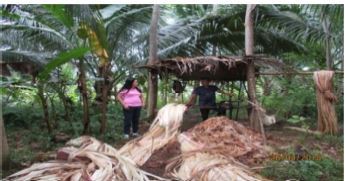
Abstract
The study was conducted to determine the marketing practices and the profitability of establishing Abaca in the Caraga Region. A total of One Thousand Two Hundred Fifty-Six (1256) farmers, Seventy-Seven (77) traders, and three (3) processors were interviewed as the respondents of the study. Their names were obtained from the Philippine Fiber Development Authority (PhilFIDA) and the Municipal Agriculture Office (MAO) of the concerned municipalities of the Region. Data gathering activities included interviews and focus group discussions (FGDs), and stakeholder forums were conducted to validate and gather additional information. The said Focus Group Discussion and Stakeholders’ Forum were attended by the farmers, officers in various cooperatives, traders, representatives from the regional line offices, the Department of Trade and Industry (DTI), Department of Agriculture (DA), Department of Agrarian Reform (DAR) Municipal Agriculture Offices (MAO), Academe, Provincial Agriculture Officer. In the Caraga Region, abaca traders are situated in Agusan del Norte 28 or 36.36%, Agusan del Sur 25 or 32.47%, Surigao del Sur 24 or 31.17% and no traders in the province of Surigao del Norte. The one who sets the price for abaca fiber is the trader/buyer 99.28 % and only 0.71% sets by the farmer. The means of contacting buyers are referrals by the farmers 32.96%; traders will come to the farmers 27.46%, recommended by the Local Government Unit (LGU) 23.88%, and traders who are known by the cooperatives 15.68%. The buyers’ requirements in buying abaca fibers are quality 63.69% and volume 36.30%. Traders engage in buying Abaca for more than 15 years or 38.5%; 1-5 years, 30.12%; 11-15 years, 18.07% and 6-10 years, 13.25%. The means of transporting abaca fiber is through motorcycles 43.37% and hired trucks 56.61%. The estimated monthly volume sold is 1- 5 metric tons or 92.77% and 6 – 10 metric tons. The farmer’s Abaca fibers through Barangay or Municipal Traders, Cooperatives/Consolidators, Baling and Grading Establishment, Processors, and exporters. The issues and concerns for the traders are the following: classification and grading of fiber, cheating abaca bundles where stones inserted to increase weights, abaca fiber not adequately dried, and piles of Abaca are mixed with other fibers. The profitability of abaca farming for 1 hectare /year is the average of P48,000 for a typical farm, while for a good farm is P115,200 – 192,000.

Introduction
The "Manila hemp," known internationally for its world-class fiber, continues to be one of the priority agricultural commodities of the Department of Agriculture (DA). The Philippines supplies more than 87.4 percent of the total abaca fiber market and earns more than $111.33 million in global abaca trade annually (PCA, 2017).
In 2022, as per PhilFIDA data, Caraga ranked third among the top abaca-producing regions in the country with an estimated 10,000 metric tons (MT) of fiber production, next to Bicol Region (1st) and Davao Region (2nd).
Abaca is in great demand in the world market today because of its lucrative value in industries such as making security papers, paper money, ropes, insulators, and other handicrafts. The most important part of the Abaca is the stalk which is the source of the fiber. Abaca fiber is superior to all other natural fibers because of its great strength and its resistance to the action of water. It is three times stronger than cotton, the most potent natural fiber.
The country’s overall fiber production is estimated at 62,640.63MT, remaining the top abaca-producing country, supplying 85% of the fiber demand in the world.
Pulp, which accounts for 69.2 percent market share of the abaca exports, has reported earnings of $ 79.4 million or an increase of 11.7 percent. Abaca cordage, which grabbed a market share of 10 percent, fell to $ 11.4 million. Fiber crafts exports also fell 67.3% to $3.7 million (The Philippine Star, 2016). The pulp manufacturing industry is the leading end-user of abaca fiber, followed by cordage manufacturing and fiber craft industry. It was reported that due to the increasing use of abaca fiber in specialty paper manufacturing, the demand for fiber among pulp manufacturers is constantly surging, and the trend is expected to prevail in 2014-2019. Among the leading abaca fiber suppliers, Ching Bee Trading Corporation dominates the market in the Philippines, followed by Tag Fibers, Inc. and Selinrail International.

For the past half-decade, the Abaca industry helped boost the country’s economy from its export earnings with an annual average of P4.7 billion, mainly in the Visayas and Mindanao Islands. Abaca fibers are cultivated across 176,549 hectares of farmlands by over 122,758 farmers. Moreover, in recent years, it has been perceived that aside from the substantial contributions of Abaca to the economy, its utilization can also provide numerous ecological advantages (www.philfida.da.gov.ph, 2019).
With the continuing development of the fiber craft industry in the Philippines, the abaca fiber market has been witnessing a boost due to the growing demand for gifts, toys, and housewares. Moreover, increasing consumer inclination for lifestyle products is further expected to strengthen the growth trend for abaca crafts in the coming years. There are only two significant exporters of abaca fiber in the world – the Philippines and Ecuador, with the Philippines accounting for over 80% of the global production of abaca fiber. In the Philippines, the abaca plant is cultivated across 130 thousand hectares of land by over 90 thousand farmers.
Asia Pacific was the largest market for abaca fiber in terms of production and consumption over the past few years, and the trend is expected to continue over the forecast period. The Philippines, the world's largest abaca producer, hold a significant market share in Asia Pacific. A considerable portion of produced abaca fiber in the Philippines is internally consumed, while a substantial amount is exported to various countries, including U.S., Japan, and other European countries. The Philippine government supports initiatives to increase high-quality abaca fiber production levels for domestic consumption and export. This is expected to strengthen its market positioning further and open market opportunities for new players over the next seven years (Erie News, 2019).
Thus, this undertaking is critical to fill the data gaps of the recently conducted Value Chain Analysis of the Commodity in the Region. Profiling tells us the actual scenario of how many abaca farmers engaged in this commodity, what support programs they availed in our present administration, what they need, and what other issues and concerns so that our government can also make some intervention programs for our abaca industry.
Major end-user industries of abaca fiber include paper and pulp, fibercraft, and cordage. The paper and pulp industry is the largest end-user industry for abaca fiber, followed by cordage manufacturing and fiber craft industry. Increasing the application scope of abaca fiber in specialty paper manufacturing is likely a critical factor driving demand for abaca fibers in the paper & pulp industry. The rising market for cordage in industrial applications, including the production of ropes for ships, is expected to boost its demand over the next seven years.
Source : Farmers practices in marketing Abaca fiber in Caraga Region
1 note
·
View note